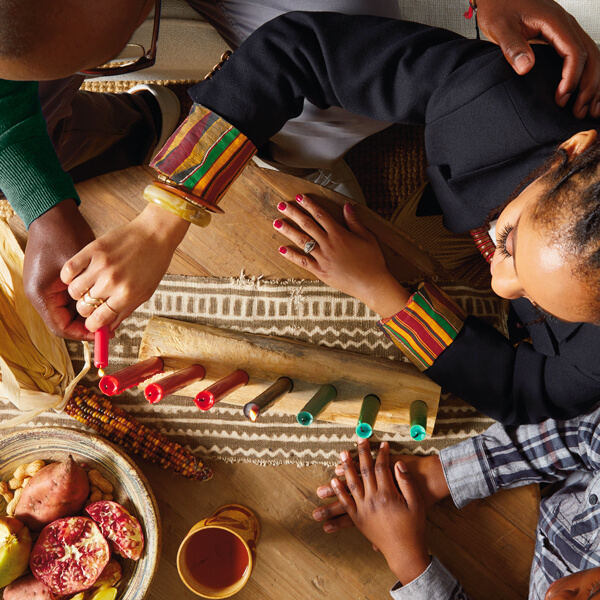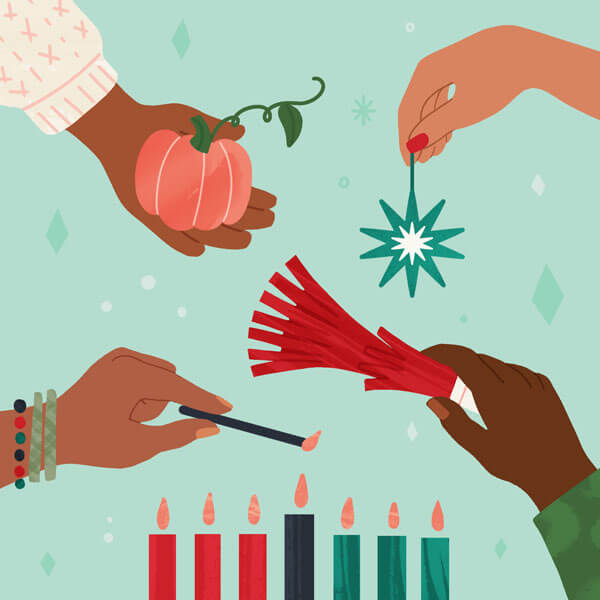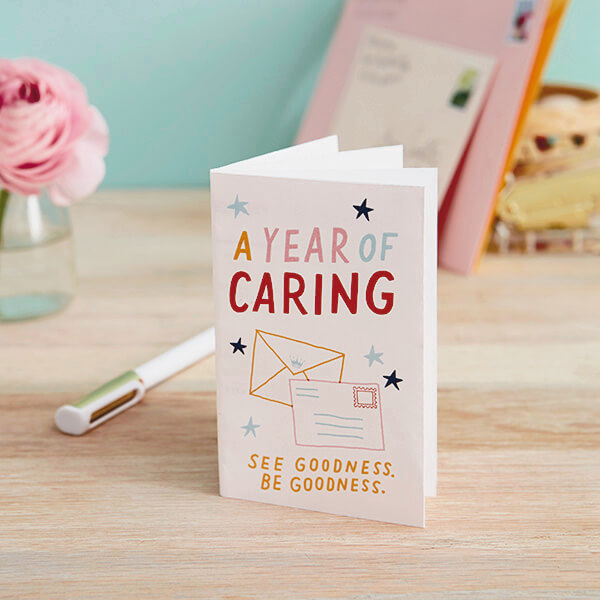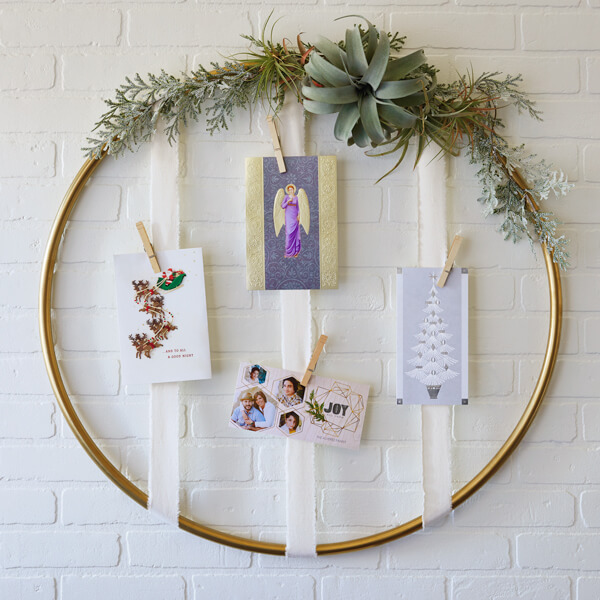Latinx Christmas traditions and holiday celebrations
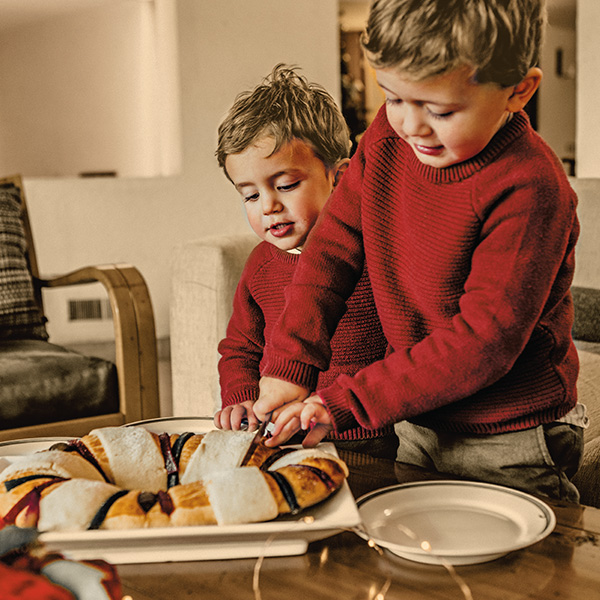
There’s no one way to celebrate Christmas, especially when it comes to Latinx holiday traditions. With over 20 countries encompassing Latin America, holiday festivities in El Salvador are just as distinct as they are in Costa Rica. From the tamal ingredients to the neighborhood caroling, Latinx culture is a vibrant mosaic of unique celebrations. Plus, Latinx families are continually finding ways to add new traditions to the mix.
For this post, Mercedes Lucero talked to friends and family to learn about their favorite Christmas traditions.
Inspired? Create and share by tagging @HallmarkStores.
Tamales are a Christmastime must
Making tamales (corn-based dough with various fillings steamed in corn husks or banana leaves) is a big Latinx holiday tradition. Because preparing these can be complicated and time-consuming, families often form assembly lines to make tamales in big batches.
And you might be surprised to discover that tamale recipes can be pretty unique: Regional influences shape everything from the ingredients to the wrapping.
From a conversation between a group of Hallmark employees:
Lucia S.: For Christmas, we would always cook tamales. But we would cook the Costa Rican tamales, which have the plantain leaf with rice and pork.
Karla H.: In Mexico, those are called corundas.
Lucia: Oh, really?
Carlos A.: Now, in El Salvador, they’re the same tamales, but we don’t put rice in them.
Lucia: Yeah, we put rice, potatoes, carrots, peppers…
Carlos: Pork, but not steak meat. It’s pork meat.
Lucia: Yeah, we do that, too. And, we do chicken, too.
Carlos: And chicken, yeah. But definitely no steak meat and definitely no ciruelas (plums). I married a Cuban. Now I got a different cultural shock. My mother-in-law used to make tamales, but they were not the Central American or Mexican type. So the first time I tried it, I was like, “This is your version of a tamal?” And with that big Cuban accent of hers, she would tell me, “Carlos, if you do not like it, then don’t eat it.”
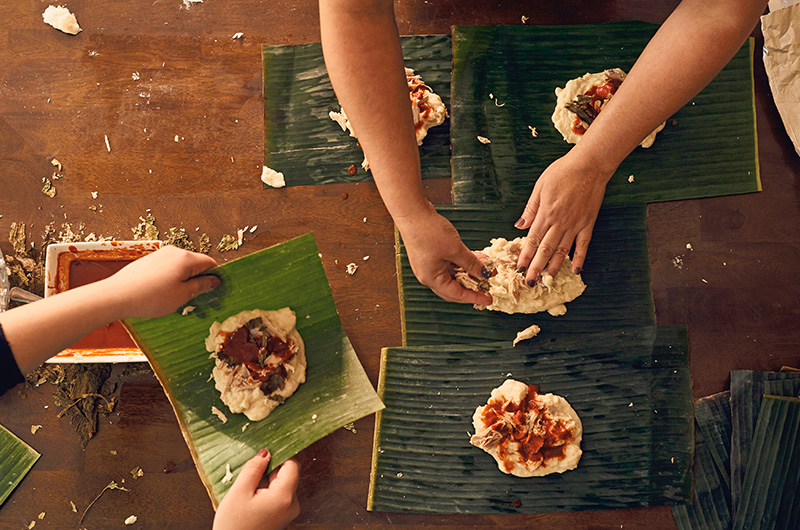
Celebrations revolve around favorite recipes
While we’re on the subject of food, we might as well let you know that it’s all about holiday recipes. Gathering for a meal is more than a Christmas tradition. It’s about the culture and heritage.
Nathan G.: For me, Christmas is always important because that was the only time during the year when we actually got to have Puerto Rican food. So I was always looking forward to eating as much as I could of arroz con habichuelas (rice and beans), arroz con gandules (rice and pigeon peas) and pasteles (tamales).
Lucia: We cook tamales, and then on my mom’s side, we also make pan de yuca (type of cheese bread) with the mozzarella cheese inside, so it melts. Then we eat them with hot chocolate.
Karla: There is always rompope (an eggnog-like drink). That’s something we always have.
Elizabeth A.: For New Year’s Eve, we eat exactly 12 grapes and make a wish as we eat each one. The 12 grapes are 12 wishes we want to come true in the next 12 months. Another unique tradition is eating pachamanca (traditional Peruvian dish cooked in an earthen oven). It is a meal that is cooked underground using stones, heat and banana leaves to cover the meat and potatoes inside.
Every holiday is an excuse to gather
Many Latinx holiday traditions are opportunities for whole communities to get together. That can make holidays especially difficult for those who aren’t able to celebrate Christmas in their country of origin or who are away from family.
Lucia: Living in the United States, you don’t always feel close to your culture. So that time of year, you’re making all the food, you’re with family, and you’re speaking Spanish, at least for me. We also play cards, so that’s a moment to gather while others are cooking or playing around. That’s how it’s always been.
Nathan G.: It’s funny thinking about it now. My grandma lives in Austin, Texas. Home felt like Austin. Being there was more of where I felt like myself and part of a familial unit. The house was small but 15 people in the house, for me, was fun.
Rosa B.: We have Posadas—celebrations where there is music, traditional food like tamales and atole (hot masa-based drink), and piñatas.
Carlos: In my Salvadorian family, everybody and all the cousins came. Sometimes we would go to someone’s apartment, and it’s so small. You’re in the middle of the winter. It’s 5 degrees outside and inside it’s like 95 degrees because you have 30 people in the apartment.
Idalia A.: We have a parranda, which is where you go to another person’s house during the holidays and sing without them expecting you.

Christmas Eve is the big day
Also known as Nochebuena to many Latinxs, Christmas Eve is a particularly special evening. It can include dinners, gift exchanges and celebrations of faith. Many people attend Misa de Gallo (Midnight Mass) and then return home to sing, dance and gather together.
Nathan: Dinner was late on Christmas Eve. Then, we’d open one present. At my grandma’s house, there’s a massive Last Supper mural looming over us as we do everything. In the home, we always respected Grandma. She’s the most religious. As my grandma has gotten older, it’s more difficult to get out of the house for Midnight Mass, but it’s something we did when we were younger.
Carlos: In general, I think faith and religion do play a big role. The tradition of mass continues. The food continues. The gathering continues. Even though your kids are growing up and creating their own identities, you want to keep those cultural traditions that have been instilled in you.
Elizabeth A.: We wait until midnight on Christmas Eve to open all presents. We also put ceramic animal ornaments underneath the Christmas tree and place Baby Jesus out at midnight to represent when he was born.
Traditions blend and change
Many Latinx cultures continue to celebrate generations of long-held traditions. But some people find themselves adding new traditions along the way. And while some of our stories refer to “Catholic” ceremonies and rituals, many Latinx people living in the United States have converted to Protestantism.
Karla: I have two different stories because I remember Christmas when I lived in Mexico and when we moved to the U.S. Before we moved, we celebrated Los Reyes in Mexico, but you don’t celebrate it until January. When we moved, my parents introduced us to Santa Claus. Over time, we started developing our own traditions in the U.S.
Carlos: We don’t cook tamales, so we end up getting the Chick-fil-A chicken platters on Christmas morning. Now, my children are still wanting Chick-fil-A. A part of you also wants the tradition. The matching pajamas is new. And you adopt it from the American culture, you know? What’s the ugliest pajama that Mom can buy?
Lucia: We started a new tradition of going to a Chinese restaurant. That’s been new since we came to the U.S.
Elizabeth: When the younger cousins started to grow up and since they were born in the USA, they wanted certain foods like KFC mashed potatoes, macaroni and cheese or cheesecake. We now have American and Peruvian dishes at the table.
It’s clear Latinx holiday traditions can mean many different things depending on the circumstance, region or history of the family or community. At the heart of each of these Christmas celebrations, however, there remains not only a sense of pride in one’s heritage but also a love for faith, family and community. New traditions may be added along the way, but Latinx culture will always be carried in the hearts of those who are proud to call it their own.
Read more on traditions at the holidays—whether celebrating another culture or celebrating different faiths in your own family:
Shop Christmas
See allYou may also like
See more-
Christmas Sweet dreams, Santa!
Catch Santa napping on the job with this Snoring Santa Keepsake Ornament featuring sound and motion. With every snore...
-
Kwanzaa What is Kwanzaa?
What is Kwanzaa? A festival of lights rich in African symbolism, it takes place each year from December 26th through ...
-
Christmas Advent calendar activities for adventurous families
It’s time to start the countdown. Maybe it’s about being mindful…or counting your blessings…or preempting your kids a...
-
Summer Ways to celebrate Juneteenth
While Juneteenth was officially recognized as a federal holiday in 2021, this pivotal moment in history has been cele...
-
Christmas Christmas and Kwanzaa: Keeping family holiday traditions and finding your own
Whether you’re single or starting a family, religious or agnostic, someone who celebrates Christmas and Kwanzaa or ju...
-
Halloween Make ghosts and goblins feel right at home this Halloween
Light up your home with haunting Halloween seasonal decor. 🎃👻 Shop now at Hallmark Gold Crown stores or at Hallmark.com.
-
Halloween No scaredy cats around here!
When this black cat crosses your path, you know fun can't be far behind. 😻 🧙♀️ Shop the Zip-A-Long Cat in Hallmark G...
-
Halloween While you’re waiting for The Great Pumpkin this Halloween…
Fly around the pumpkin patch with Zip-a-long Snoopy! 🎃 Shop more frightening finds in Hallmark Gold Crown stores and ...
-
Halloween Light up the night with frightful fun!
Could it be? Could it be!? Yes it is! It’s the Peanuts® Snoopy and Woodstock Halloween figurine! 🎃 🐶 Find it and more...
-
Halloween Where cozy meets mischief and magic
Make some magic this Halloween with this Hocus Pocus hooded blanket. 🧙♀️👻Find more Halloween essentials in Hallmark ...
-
Gifting Relive a favorite from your childhood!
Fill your home with a few small joys inspired by Disney’s “It’s a Small World” 🩵🎎 Shop the collection at Hallmark Gol...
-
Halloween Which house will you be sorted into?
The Harry Potter™ Sorting Hat™ Mug plays sound whenever you lift the lid. Find this chatty mug in Hallmark Gold Crown...
-
Encouragement How to support caregivers
It’s often hard to know how to support a caregiver. Most caregiving checklists out there hit the major topics like me...
-
Love 50 different ways to say I love you
You don’t need to wait for a special occasion to remind that certain someone how much he or she is loved. Spice up yo...
-
Graduation 15 graduation quotes
Celebrate your favorite grad’s milestone with the wit and wisdom of Hallmark writers, fans and others. We’ve rounded ...
-
Congratulations How to congratulate someone
Congratulating others is easy and fun, right? Like when your friend worked really hard and got that awesome job makin...
-
Care & Concern Be more caring with a kindness journal
It's obvious the world could use more kindness. So this year, why not make "be more caring" your number one resolutio...
-
Fall Día de Muertos: A celebration of life and love
Día de Muertos, Day of the Dead, is a holiday originally celebrated in the southern and central parts of Mexico and i...
-
Card Ideas Card messages for kids: What to write in a kid’s holiday card and more
My 3-year-old was having a hard time at preschool drop-off. Dragging his feet. Asking to stay home. This went on a fe...
-
Christmas 6 Creative Christmas Card Display Ideas
Holiday card season is here: Our mailboxes are about to fill up with festive envelopes with pretty stamps and familia...


